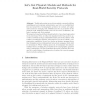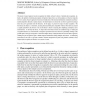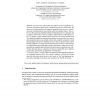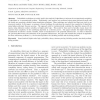662 search results - page 31 / 133 » Formalizing Basic First Order Model Theory |
TPHOL
2009
IEEE
14 years 2 months ago
2009
IEEE
Traditional security protocols are mainly concerned with key establishment and principal authentication and rely on predistributed keys and properties of cryptographic operators. I...
LOGCOM
2002
13 years 7 months ago
2002
We present a logical approach to plan recognition that builds on Kautz's theory of keyhole plan recognition, defined as the problem of inferring descriptions of high-level pl...
ISCA
1998
IEEE
13 years 12 months ago
1998
IEEE
A memory model for a shared memory, multiprocessor commonly and often implicitly assumed by programmers is that of sequential consistency. This model guarantees that all memory ac...
ICCS
2007
Springer
14 years 1 months ago
2007
Springer
Abstract. Previous work of the authors has studied a notion of implication between sets of sequences based on the conceptual structure of a Galois lattice, and also a way of repres...
JCST
2010
13 years 2 months ago
2010
Probabilistic techniques are widely used in the analysis of algorithms to estimate the computational complexity of algorithms or a computational problem. Traditionally, such analys...




